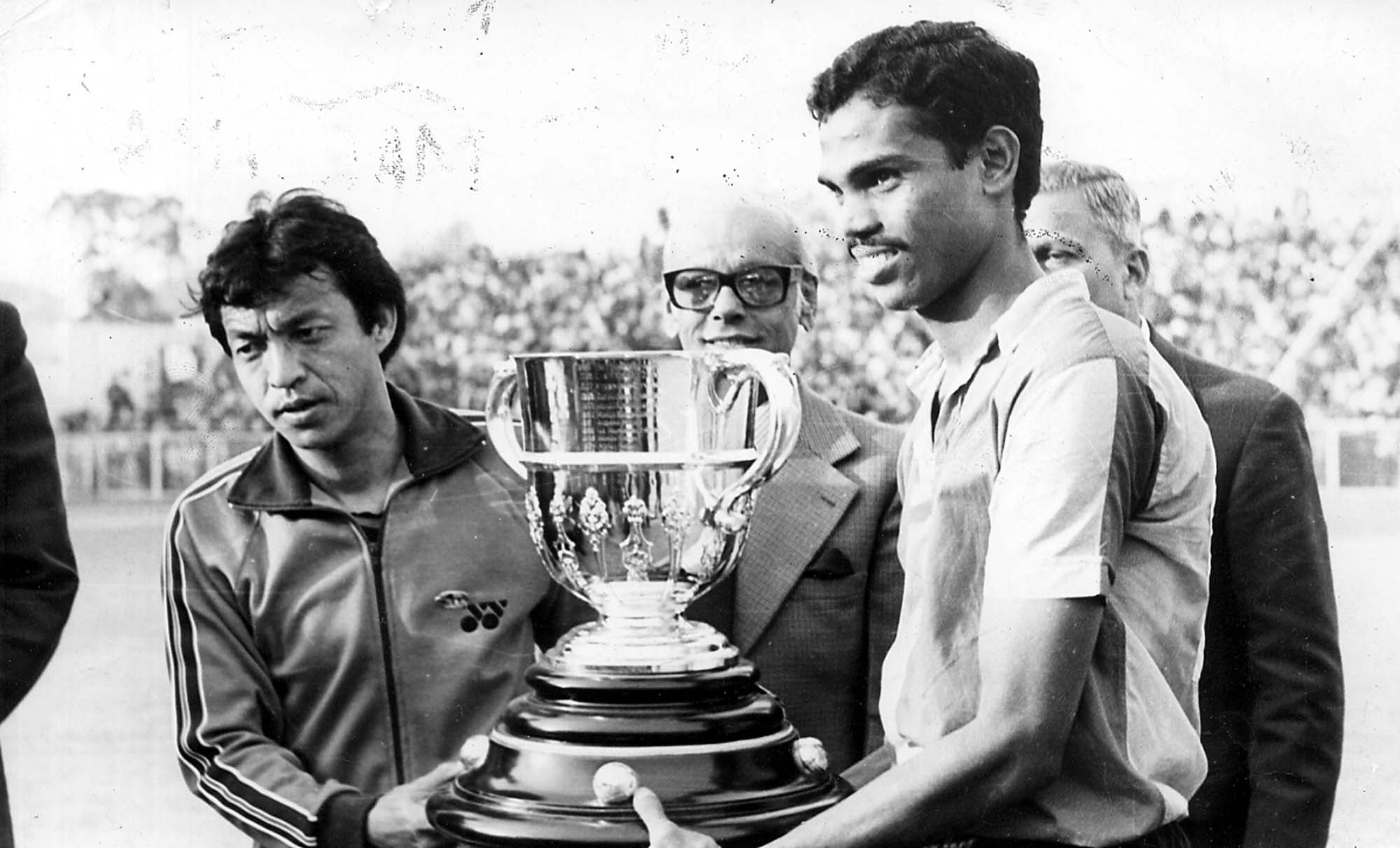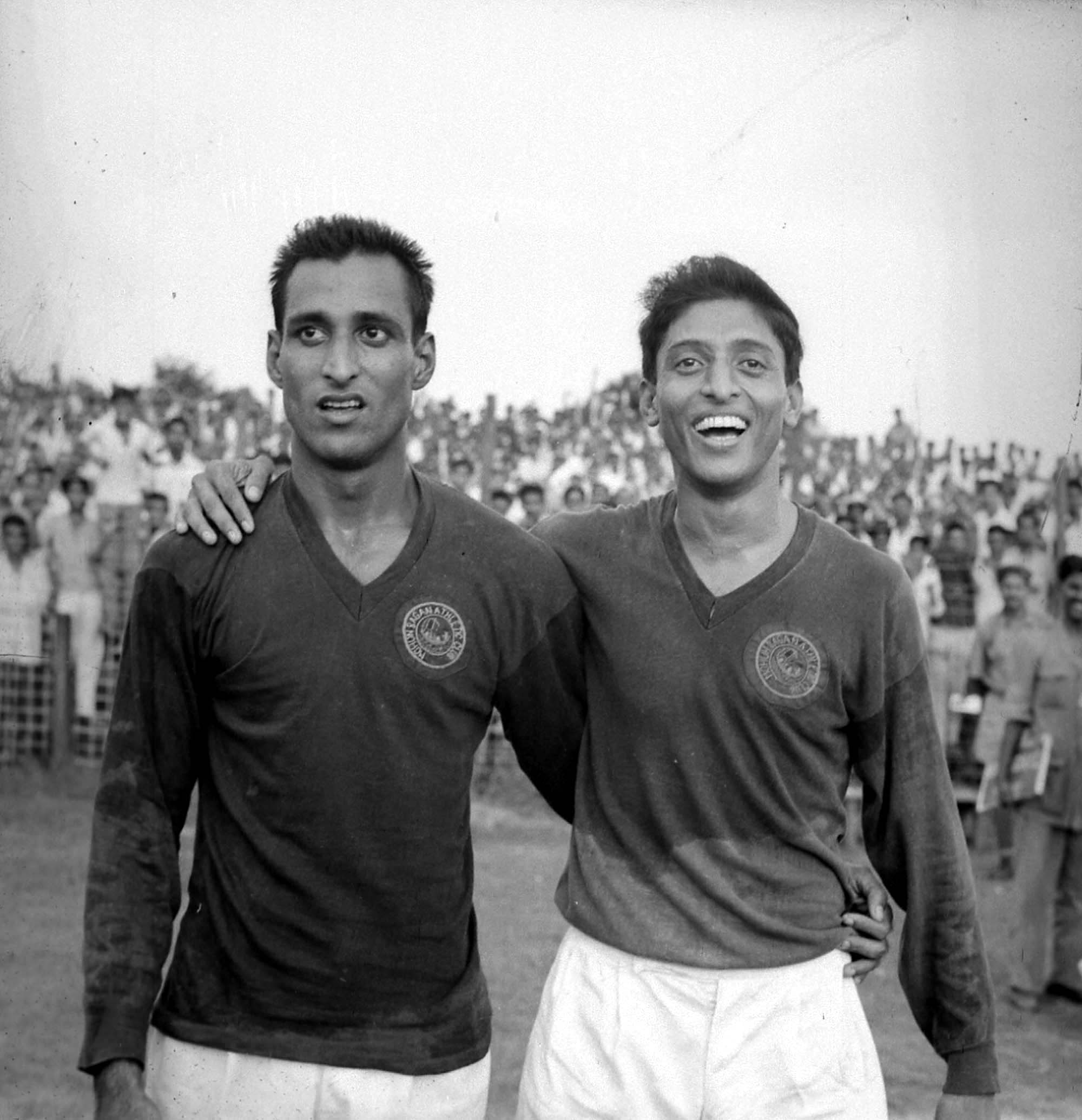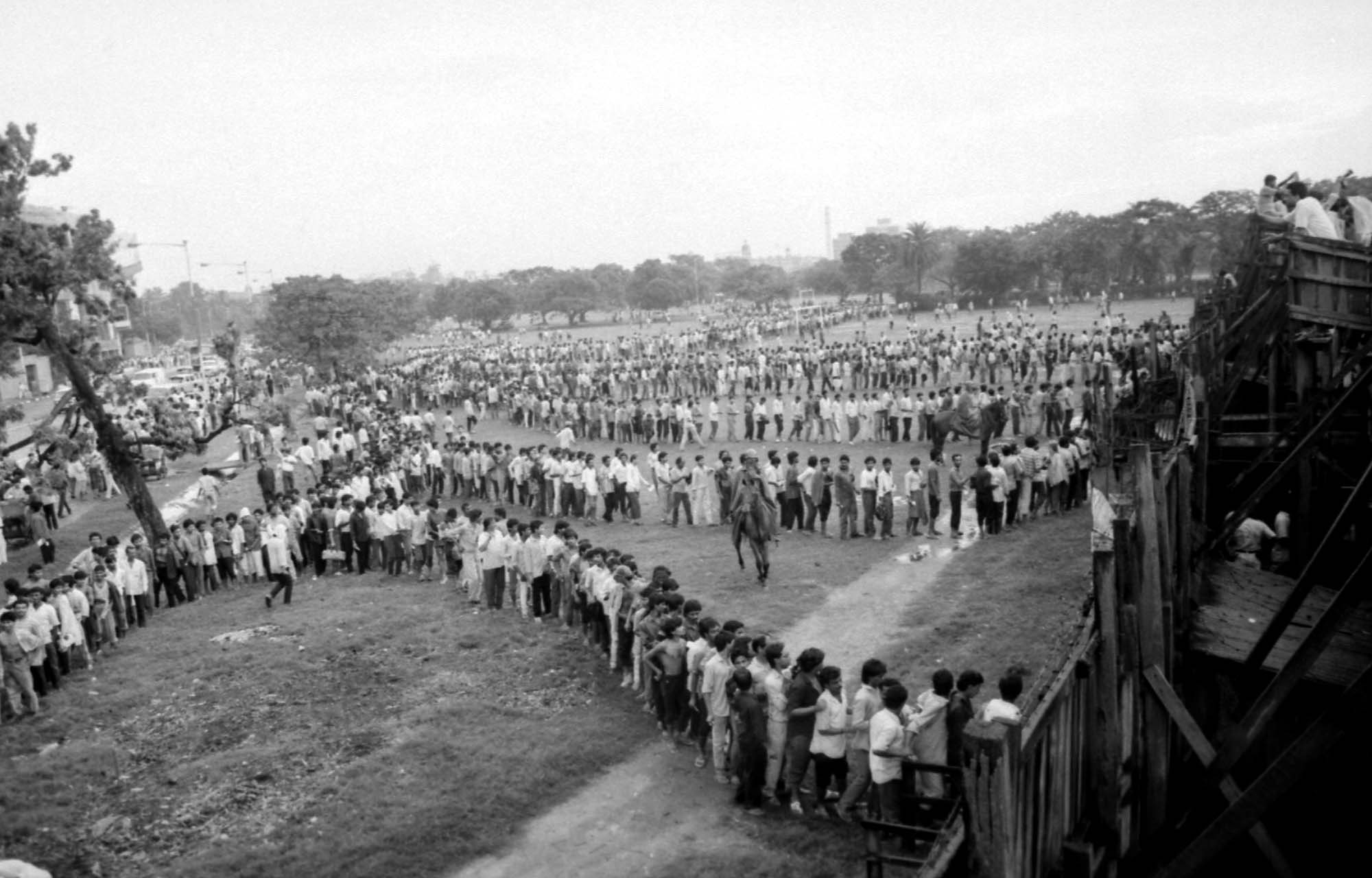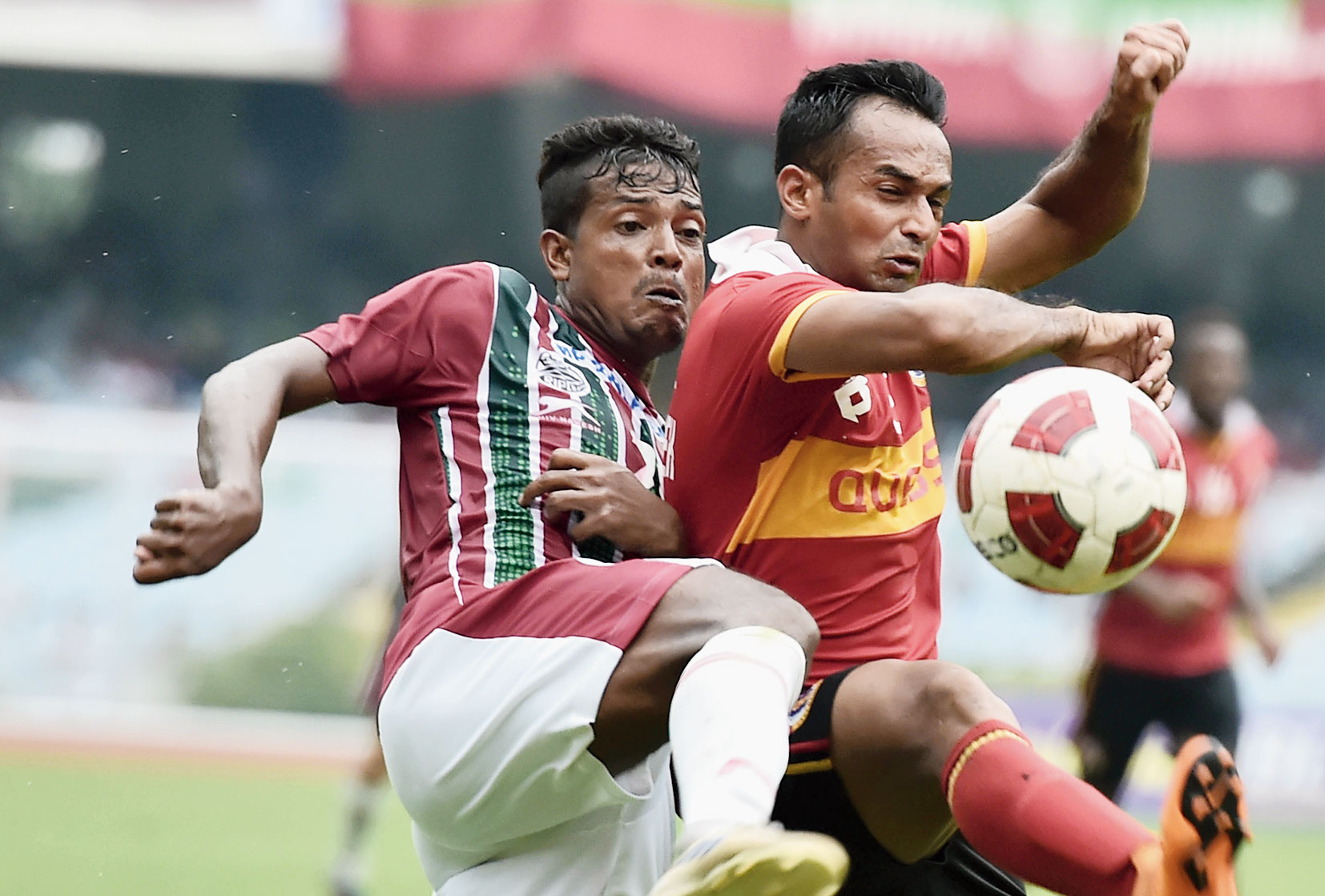Right at the outset, a confession.
I am a diehard Mohun Bagan fan. I have been so ever since Shyam Thapa scored that mesmerising bicycle kick to take Mohun Bagan to victory in the Calcutta derby in 1978. I had a maroon-and-green jersey and Thapa’s number 22 drawn on it with white Camlin pastels.

Shyam Thapa of Mohun Bagan and Victor Amalraj of East Bengal, joint winners of Durand Cup, with the trophy in New Delhi. (File picture by S. Saraswathi)
But it was tough, very tough, to be a Mohun Bagan supporting pre-teenager in a household of diehard East Bengal fans. Our family has roots in Noakhali from my father’s side and in Dhaka-Bikrampur from my mother’s. One of my mother’s maternal uncles was the legendary East Bengal inside forward, Sunil Ghosh. He had been captain of the club in 1944-45 with 97 career goals to his name, and formed a lethal strike force with Somana, who, with 85 goals still holds the league record. (Ghosh is second on the list with 75.) I had actually grown up with stories of Appa Rao, Syed M. Kaiser and Saleh, who stayed in Sunil dadu’s Park Circus home when they played for East Bengal in the late Forties.
All the stories one heard were of East Bengal. How the club was formed because of a bias against “Bangals” prevalent at the time and that East Bengal was a symbol of the resistance and resilience of people from “that part”, who have done well for themselves through sheer hard work, talent and determination. Stories were recounted of East Bengal legends such as Venkatesh, Saleh, Nayar, Ahmed Khan and, of course, Sunil Ghosh, the head-er jadugor, magician with the head, of the 5-0 win over Mohun Bagan in the 1975 IFA Shield… There would hardly be any mention of the Bagan dominance of the Fifties and Sixties when Chuni Goswami was at his peak and the club had players like Kempaiah, Jarnail Singh and Ashoke Chatterjee. We would hear stories of soirees organised to celebrate East Bengal’s league or shield win at which S.D. Burman, a fanatic supporter, sang.

Chuni Goswami and Ashim Moulik of Mohun Bagan football team (File picture)
An East Bengal defeat, especially in the derby, would mean plenty of long faces, the ilish maachh, would be packed and sent back to the deep freeze and my shrieks of joy would be frowned upon, earning tut-tutting disapproval of the elders. A red-gold victory on the other hand would leave me sad but there’s always a silver lining: the ilish would be out, cooked, served and relished.
More often than not, though, and much to my chagrin, East Bengal had the upper hand since Bagan slipped into decline in the Seventies. Some of my friends from Bagan families would complain of having missed dinner because of the gloom that descended on the household, the much anticipated golda chingri malai curry going down the goal. Sunil dadu, who once spied my maroon-green jersey on our clothesline after the derby defeat of his beloved team, refused to enter our home.
For us teenagers, the rivalry was just that, between two teams, limited to the football ground. Eventually, we learnt of the great Bangal-Ghoti divide, an imaginary socio-economic-cultural construct of community and boundary fuelled by the trauma of Partition. The Bangal, a “refugee”, was perceived to be loud, crude, lacking in refinement, and one who had “invaded” the land of the original Bengali bhadrolok. The Bangals on the other hand regarded the Ghotis as lazy, avaricious and petty.
A little older and we started attending the games as well at the Mohun Bagan (and at times the East Bengal) ground. Apart from the raucous and vibrant crowd, what was fascinating was the bond anonymous spectators developed for one another. They were just faces, often without names, sharing a common passion, for football, for one club.
The world has moved on, but what we saw back then was perhaps the most frenzied and passionate football rivalry in the world. The lead-up to a derby would be equally passionate: teams were discussed, line-ups formed, strategies plotted over steaming cups of tea and telebhaja. On the day of the match, we would gather around the radio, occasionally the TV, since not every household had a set. Much of all that changed in 1986, and the football World Cup in Mexico beamed live into India’s households. We hadn’t seen football like that, it was a game very different from what we had been used to.
But three decades on, I still at times think how it must have been: the buzz around the stadium, the magnificent men in maroon-green or red-gold, advancing, Akbar’s header and Bhaskar Ganguly’s lunge to keep the ball out. And the roar that went up. And my sense of joy quickly followed by a sense of foreboding — an East Bengal loss would mean the ilish would again have to wait.













